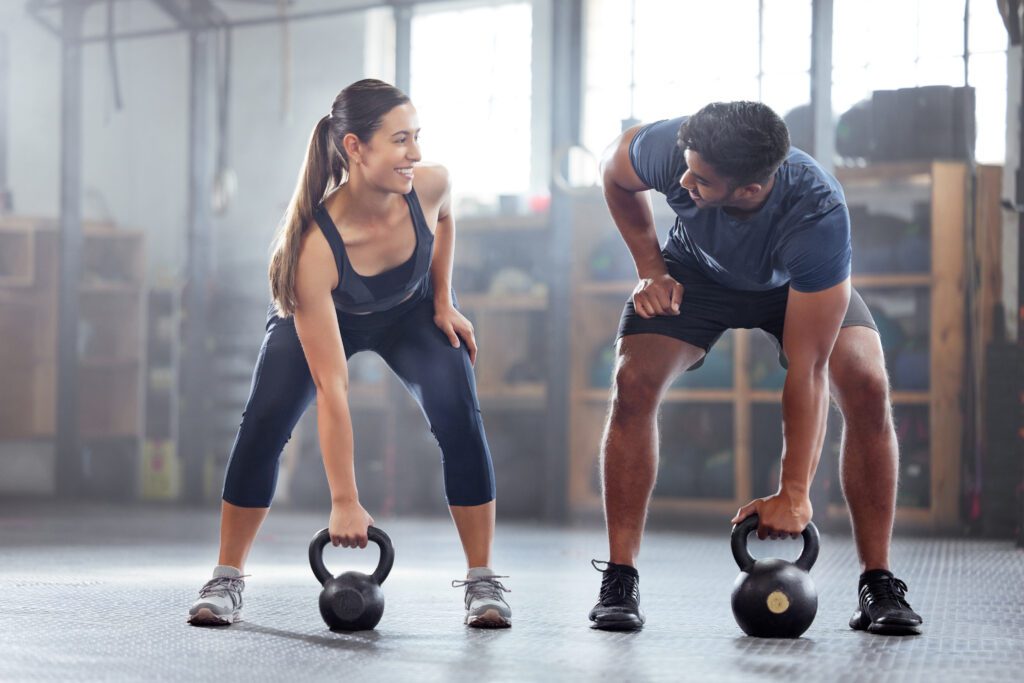When it comes to heart health, exercise is one of the best steps you can take. However, you are likely to encounter a glut of myths concerning exercise. Unfortunately, many of these myths can stall your progress, lead to injury, or even be damaging to your health. Take our quiz so you don’t take these exercise myths to heart.
Choose the fact(s) that replace the myth:
Myth: No pain, no gain; or you won’t see any results from your exercise unless it hurts during or after.
A. Fact: A fitness activity should not hurt while you are doing it.
B. Fact: Pain during a fitness activity can mean you’re doing it incorrectly or you’ve injured yourself.
C. Fact: Sore muscles after a fitness activity likely mean you exercised too hard and that you should start at a lower intensity and increase it from there.
D. All of the above
Myth: Weightlifting will just bulk you up.
A. Fact: Only women need to worry about weightlifting causing bulky muscles.
B. Fact: Weightlifting is great for keeping and building normal muscle mass; creating bulky muscles actually takes quite a lot of time and effort.
C. Fact: Bulky muscles can only be created through supplements, like steroids.
D. Fact: Weightlifting has no benefit for heart health.
Myth: Working out means that you can eat anything you want that day.
A. Fact: Working out means that you can eat anything you want for two days.
B. Fact: Working out means that you just need to avoid eating high-fat foods that day.
C. Fact: Most exercise does not burn nearly as many calories as you think, so you cannot eat whatever you want on workout days.
D. None of the above
Myth: You can target specific parts of your body with specific exercises, such as doing crunches to reduce inches at your waist.
A. Fact: You cannot target weight loss in specific parts of your body.
B. Fact: Specific exercises will improve your muscle strength in the targeted muscles, such as crunches targeting core muscles.
C. Fact: Overall body fat must be reduced significantly for abs to have definition, which requires strict diet and exercise.
D. All of the above
Myth: You need to work up a sweat to have an effective workout.
A. Fact: Sweat is the body’s way of cooling down, not a measurement of the effectiveness of a workout.
B. Fact: It’s possible to burn a significant number of calories without breaking a sweat.
C. Fact: Many factors go into the amount a person sweats, such as the temperature, humidity, and hydration levels.
D. All of the above
Myth: Only aerobic exercise is worthwhile for weight loss, as it boosts your calorie burn for hours after the workout.
A. Fact: Your metabolism will continue to work at a slightly higher rate after an aerobic workout, but the amount of calorie burn is not significant.
B. Fact: All exercise is worthwhile, from weightlifting and strength training to walking and dancing.
C. Fact: There’s a little bit more of a metabolic boost after strength training, though still insignificant.
D. All of the above
Myth: Using exercise machines is the only safe way to weight train because your form is always correct.
A. Unless you have a trainer to figure out the right setting for you, you can make just as many mistakes in form and function on a machine as you can working out with free weights or other types of exercises.
B. Calisthenics is the only form of safe strength training.
C. Yoga is the only form of safe strength training.
D. Pilates is the only form of safe strength training.
Myth: Exercise is only effective if you can do it daily for a significant amount of time each day.
A. Fact: Any activity is better than no activity, even if it’s only a 15-minute walk.
B. Fact: Any level of physical activity is important for heart health and is proven to reduce stress.
C. Fact: Even small changes like taking the stairs rather than an elevator can have an impact on your health.
D. All of the above
compiled by ERIKA ALDRICH / Resources: The Heart and Stroke Foundation of Canada, National Institutes of Health, and the Mayo Clinic Health System
ANSWERS:
D. All of the above
B. Fact: Weightlifting is great for keeping and building normal muscle mass; creating bulky muscles actually takes quite a lot of time and effort.
C. Fact: Most exercise does not burn nearly as many calories as you think, so you cannot eat whatever you want on workout days.
D. All of the above
D. All of the above
D. All of the above
A. Unless you have a trainer to figure out the right setting for you, you can make just as many mistakes in form and function on a machine as you can working out with free weights or other types of exercises.
D. All of the above
